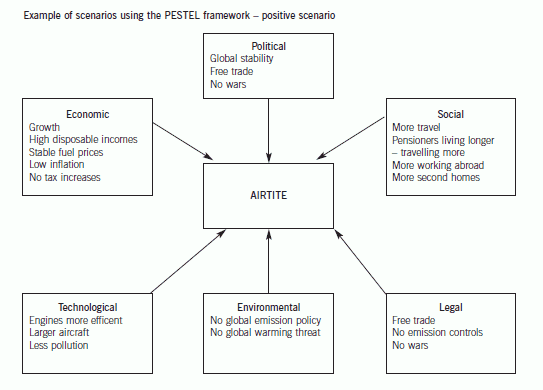(b) How might the marketing mix vary between the three channels Helen is considering using? (8 marks)
第1题:
6 Communication is important for all organisations and requires an understanding of communication flows and channels.
Required:
(a) Briefly explain the main purposes of the three main formal communication channels in an organisation:
(i) Downwards; (3 marks)
第2题:
(b) Explain how Perfect Shopper might re-structure its upstream supply chain to address the problems identified
in the scenario. (10 marks)
第3题:
(d) Describe the three stages of a formal grievance interview that Oliver might seek with the appropriate partner
at Hoopers and Henderson following the formal procedure. (9 marks)
第4题:
(b) Explain how the process of developing scenarios might help John better understand the macro-environmental
factors influencing Airtite’s future strategy. (8 marks)
(b) Carrying out a systematic PESTEL analysis is a key step in developing alternative scenarios about the future. Johnson and
Scholes define scenarios as ‘detailed and plausible views of how the business environment of an organisation might develop
in the future based on groupings of key environmental influences and drivers of change about which there is a high level of
uncertainty’. In developing scenarios it is necessary to isolate the key drivers of change, which have the potential to have a
significant impact on the company and are associated with high levels of uncertainty. Development of scenarios enables
managers to share assumptions about the future and the key variables shaping that future. This provides an opportunity for
real organisational learning. They are then in a position to monitor these key variables and amend strategies accordingly. It
is important to note that different stakeholder groups will have different expectations about the future and each may provide
a key input to the process of developing scenarios. By their very nature scenarios should not attempt to allocate probabilities
to the key factors and in so doing creating ‘spurious accuracy’ about those factors. A positive scenario is shown below and
should provide a shared insight into the external factors most likely to have a significant impact on Airtite‘s future strategy.
For most companies operating in global environments the ability to respond flexibly and quickly to macro-environmental
change would seem to be a key capability.
The scenario as illustrated below, clearly could have a major impact on the success or otherwise of Airtite’s strategy for the
future. The key drivers for change would seem to be the link between technology and global emissions, fuel prices and the
stability of the global political environment. Through creating a process which considers the drivers which will have most
impact on Airtite and which are subject to the greatest uncertainty, Airtite will have a greater chance of its strategy adaptingto changing circumstances.

第5题:
(b) Using relevant evaluation criteria, assess how achievable and compatible these three strategic goals are over
the next five years. (20 marks)
第6题:
(d) Estimate by how much the bid might be increased without the shareholders of Paxis suffering a fall in their expected wealth, and discuss whether or not the directors of Paxis should proceed with the bid. (5 marks)
(d) The current bid values the shares of Wragger at £19·07 million, compared to the current market value of £15·36 million, a premium of £3·71 million. The expected synergy is £15,570,000. If these data are accurate the bid could be substantially increased without the shareholders of Paxis suffering a fall in their expected wealth. In theory, the bid could be increased by an additional £11,860,000, or 148 pence for each existing Wragger share.
There might also be strategic reasons for undertaking the bid, and the acquisition of Wragger might lead to future options that are not valued by the above analysis.
The proposed acquisition is expected to result in substantial synergy, and to create wealth for the shareholders of both companies. The directors are recommended to proceed with the bid.
第7题:
(c) Explain how Perfect Shopper might re-structure its downstream supply chain to address the problems
identified in the scenario. (10 marks)
第8题:
(ii) how effective delegation might be achieved; (6 marks)
第9题:
(c) What changes to Churchill’s existing marketing mix will be needed to achieve the three strategic goals?
(15 marks)
第10题:
(b) What advantages and disadvantages might result from outsourcing Global Imaging’s HR function?
(8 marks)